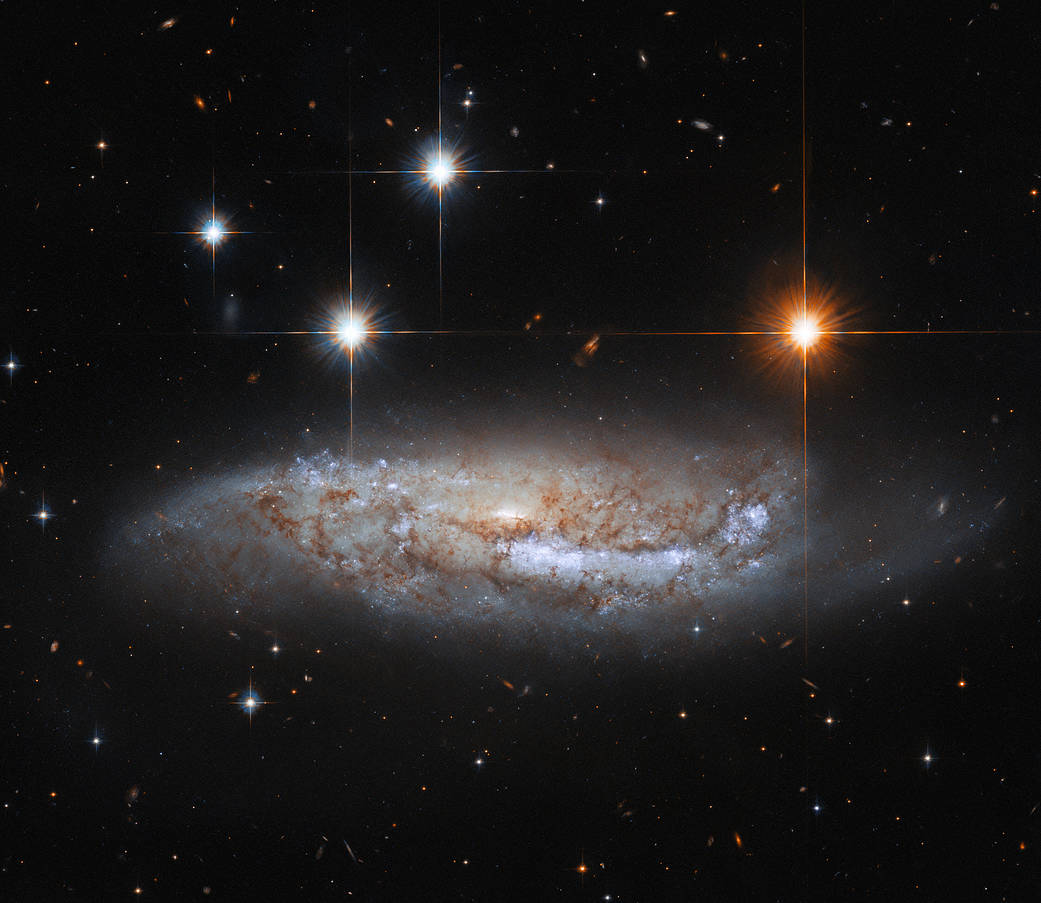In this image, the NASA/ESA Hubble Space Telescope captures a side-on view of NGC 3568, a barred spiral galaxy roughly 57 million light-years from the Milky Way in the constellation Centaurus. In 2014 the light from a supernova explosion in NGC 3568 reached Earth – a sudden flare of light caused by the titanic explosion accompanying the death of a massive star. While most astronomical discoveries are the work of teams of professional astronomers, this supernova was discovered by amateur astronomers who are part of the Backyard Observatory Supernova Search in New Zealand. Dedicated amateur astronomers often make intriguing discoveries – particularly of fleeting astronomical phenomena such as supernovae and comets.
在这张图片中,NASA/ESA哈勃太空望远镜拍摄到了NGC 3568的侧视图,这是一个位于半人马座的棒旋星系,距离银河系约5700万光年。2014年,NGC 3568中的一颗超新星爆炸发出的光线到达了地球–这是一颗大质量恒星死亡时发生的巨大爆炸引起的突然闪光。虽然大多数天文发现是专业天文学家团队的工作,但这颗超新星是由业余天文学家发现,他们是新西兰后院天文台超新星搜索的一部分。敬业的业余天文学家经常会有有趣的发现——尤其是超新星和彗星等转瞬即逝的天文现象。
This Hubble observation comes from a wealth of data gathered to pave the way for future science with the upcoming NASA/ESA/CSA James Webb Space Telescope. By combining ground-based observations with data from Hubble’s Advanced Camera for Surveys and Wide Field Camera 3, astronomers have built a treasure trove of data on the connections between young stars and the clouds of cold gas in which they form. One of Webb’s key science goals is to explore the life cycle of stars – particularly how and where stars are born. Since Webb observes at infrared wavelengths, it will be able to peer through the clouds of gas and dust in stellar nurseries and observe the fledgling stars within. Webb’s superb sensitivity will even allow astronomers to directly investigate faint protostellar cores – the earliest stages of star birth.
哈勃望远镜的观测来自于收集的大量数据,这些数据为即将到来的NASA/ESA/CSA詹姆斯·韦伯太空望远镜的未来科学铺平了道路。通过将地面观测与哈勃高级巡天相机和广域相机3的数据结合起来,天文学家已经建立了一个关于年轻恒星和它们形成的冷气体云之间联系的数据宝库。韦伯的主要科学目标之一是探索恒星的生命周期——特别是恒星是如何以及在哪里诞生。由于韦伯在红外波长进行观测,它将能够透过恒星孕育室的气体云和尘埃云,观察其中的新生恒星。韦伯高超的灵敏度甚至可以让天文学家直接研究微弱的原恒星核心——恒星诞生的最早阶段。
Image Credit: ESA/Hubble & NASA, M. Sun
Text Credit: European Space Agency (ESA)
图片来源:ESA/Hubble & NASA, M. Sun
文字来源:欧洲航天局(ESA)







